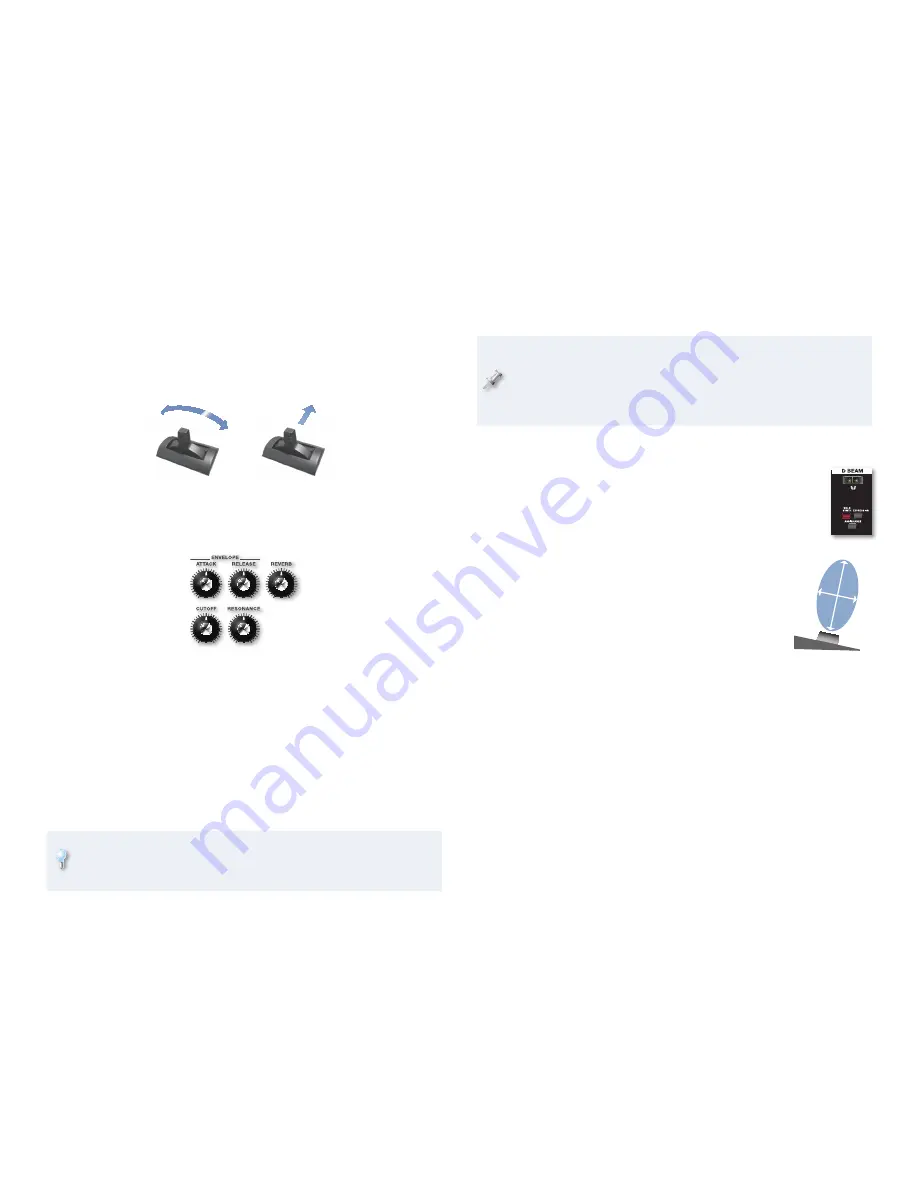
7
The Pitch Bend/Modulation Lever
The next most basic way to control a patch’s sound in realtime is by using the
Pitch Bend/Modulation lever to the left of the keyboard. Flip the lever left or
right to lower or raise the pitch of notes, or push it forward to add modulation
to the notes. Modulation—which means “change”—is often vibrato, but can
be most anything depending on how the patch is programmed.
Bend note pitches
Push to add modulation,
release to remove it
The SOUND MODIFY Knobs
In the SOUND MODIFY area of the JUNO-Di front panel are knobs that let you
quickly adjust some important parameters as you play.
The ENVELOPE ATTACK and RELEASE knobs—
•
The ATTACK knob adjusts
the speed at which a note starts to play after you press its key. The
RELEASE knob adjusts how long it takes a note to return to silence when
you release its key.
The CUTOFF and RESONANCE knobs—
•
Change a patch’s filter Cutoff and
Resonance values to produce the moving “yowl” that’s often part of
dance and electronic synth music. The CUTOFF and RESONANCE knobs
adjust those parameters in the current patch.
Press the SYNTH button to select 001: Porta Lead 1, and turn CUTOFF
and RESONANCE as you play the keyboard. (Try turning RESONANCE up
a bit first, and then turn CUTOFF for a more obvious effect.)
The REVERB knob—
•
Use this knob to increase or decrease the output
level of the JUNO-Di’s reverb processor.
The SOUND MODIFY knobs affect the currently selected patch or
rhythm set. If you’re using the Dual or Super Layer features they affect
the entire sound. When you’re playing a standard performance, they
affect the currently selected part. For more details on the SOUND
MODIFY knobs, see Page 65 of the
Owner’s Manual
.
The D Beam
The D Beam is an infrared sensor that tracks the position of
your hand as it moves above the sensor. It can operate in any
of three ways. Press the desired button beneath the D Beam so
it lights to select :
SOLO SYNTH—
•
to play notes by moving your
hand over the D Beam.
EXPRESSION—
•
to adjust the parameter
designated at the Roland factory as the best for
adding expression to the current patch.
ASSIGNABLE—
•
to control the value of a
parameter in the current patch that’s been set
to respond to D Beam control.
As you move your hand down closer to the D Beam
sensor, its effect increases. As you move up and
away, it decreases. Press the currently lit button to
turn off the D Beam.
Transposing the Keyboard
The JUNO-Di’s Transpose features allow you to easily shift the notes the
keyboard plays to any key or octave, allowing you to play in any key using
the fingerings you find most comfortable.
Viewed from the side,
this is the area above the
D Beam in which you can
move your hand.
















